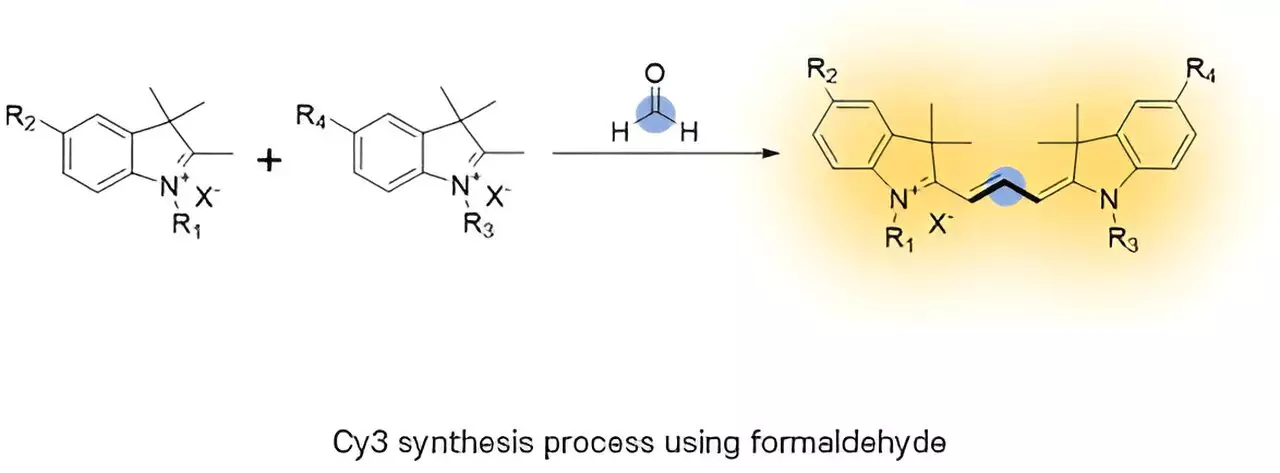Organic fluorophores have become essential tools in the fields of medical diagnostics and bioimaging, owing to their ability to fluoresce in response to specific light wavelengths. These compounds, particularly trimethine cyanine (Cy3), play a crucial role in advanced techniques such as cancer tracking and genetic analysis. However, traditional synthesis methods of these fluorophores have posed challenges regarding complexity, byproduct generation, and overall efficiency.
Recent advancements in the synthesis of organic fluorophores mark a significant development in this field. Researchers have employed formaldehyde, a relatively simple carbon compound, to streamline the production of Cy3. Historically, the complexity of the molecular structure required for producing Cy3 has involved cumbersome steps and the use of high molecular weight precursors, generating a host of undesirable byproducts. By opting for formaldehyde, which consists of only one carbon atom, two hydrogen atoms, and one oxygen atom, the research team has not only reduced the necessary molecular footprint but also enhanced the overall atom economy of the synthesis process.
Traditionally, synthesizing Cy3 relied on multi-step asymmetric reactions, complicating the overall procedure and increasing the opportunity for ineffectiveness and resource waste. The innovative approach presented by the research team simplifies this process into a one-pot reaction, drastically improving synthetic efficiency. This streamlined methodology not only conserves resources but also reduces potential hazardous waste and offers a clearer pathway for commercial scalability.
Beyond just improving the laboratory synthesis process, the researchers have explored the potential applications of their method in vivo. They investigated the natural production of formaldehyde in biological systems, especially during metabolic processes. An intriguing observation was made when analyzing rat small intestine tissues; there was a noticeable reduction in fluorescence during instances of inflammation. This finding highlighted the correlation between endogenous formaldehyde levels and the ability to synthesize Cy3 effectively. Such insights underline the potential of using these fluorophores not just experimentally but also in your real-world biological settings.
Led by Professor Young-Tae Chang and Dr. Sun Hyeok Lee from POSTECH, this research embodies a significant leap forward in organic synthesis methodology. The application of formaldehyde, while historically regarded for its cytotoxic potential, showcases its versatility as a reagent for efficient organic synthesis. The implications of this research extend beyond mere synthesis—offering revolutionary insights into bioimaging and medical diagnostics that could enhance research outcomes and patient treatment options. The successful application of this innovative synthesis route lays a promising foundation for future investigations, poised to drive advancements in various scientific fields.


Leave a Reply